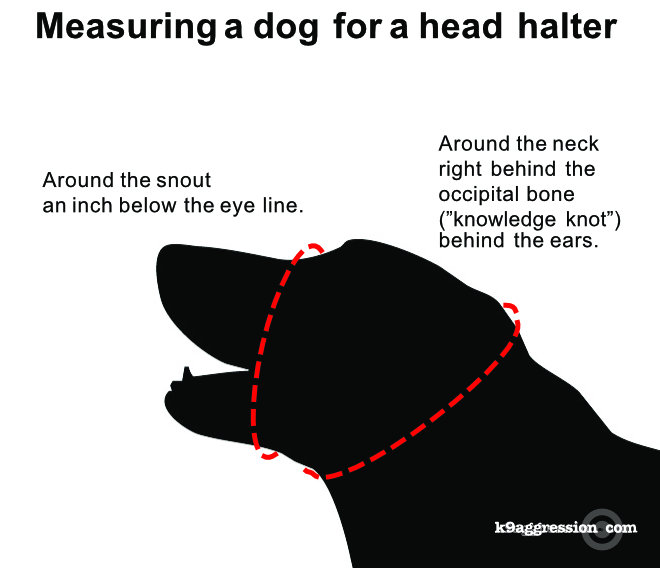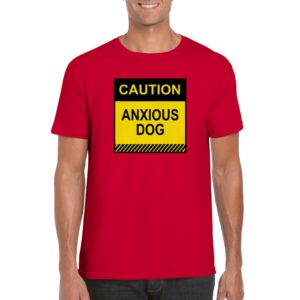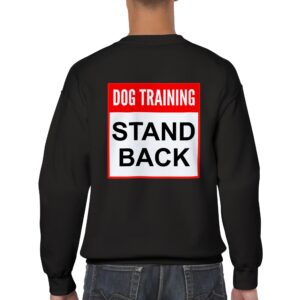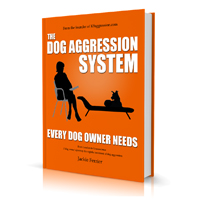Your cart is currently empty!
Managing dog aggression by using a head halter for an aggressive dog

On this page:
What is a Head Halter?
Think of a head halter as a gentle bridle for your dog. It fits around their nose and behind their ears, connecting to the leash at the bottom. When your dog pulls, the halter redirects their head, making it harder to pull and easier for you to guide them. Sometimes a head halter is confused with a muzzle, however, a head halter is not a muzzle and does not prevent a dog from biting.
Why Use a Head Halter?
Regular collars can be uncomfortable for dogs that pull, and even cause injuries. Head halters offer a more humane solution by gently discouraging pulling and giving you more control. Veterinary professionals often recommend them for dogs with pulling habits.
When a dog pulls on a leash with a regular neck collar, the pressure on their neck and throat can cause discomfort or even injury over time, and can also encourage the dog to pull harder.
Because a head halter can help communicate so sensitively to your dog, they are very useful for managing an aggressive dog or dogs that pull and are commonly recommended by veterinary behaviorists and other experts. (1)(2)
Head halters are easier and far more humane to use than choke collars, pinch collars, or leash “pops” (quick jerks to the collar).
They are particularly useful during targeted behavior modification because they will allow you to control your dog in any situation where your dog may start to pull or lunge. Also, when used properly it’s possible to discourage (but not prevent) biting.
Additionally, your dog can still breathe, drink, and most importantly eat which makes training simpler than when using a muzzle.
Neck Collars vs. Head Halters: Why the Difference Matters
Strength in the Shoulders
Dogs have incredible pulling power thanks to their strong shoulders and torso. Regular neck collars connect right where this power originates, the collarbone. This makes it difficult to control a pulling dog.
Head Halters: Gentler Guidance
Head halters, however, work differently. They fit around the head, directing the dog’s movement. The straps avoid sensitive areas, allowing for control with minimal force.
Using a Head Halter Effectively
However, head halters require a different approach than neck collars. They’re not meant for constant jerking corrections often used with neck collars.
How Head Halters Work
The Gentle Leader, a popular head halter, fits over the dog’s nose and behind the ears. The leash attaches to a ring below the chin. When a dog pulls, the pressure redirects to the head, turning it slightly and naturally guiding the body to follow. This discourages pulling while refocusing the dog’s attention on the handler.
Rewarding Good Behavior
Always reward your dog when they walk attentively, regardless of whether the head halter was needed for correction.
Combine rewards with gentle redirection
The most effective way to use one is to combine it with teaching your dog to walk on a loose leash first. This way your dog has learned the contrast between a loose leash and rewards, vs the headcollar subtly pulling.
Start this by teaching this in an environment well-known to your dog. Slowly increase the various distractions as they learn. Then practice in other environments always beginning with easy challenges for gradually working up to more difficult challenges. The head halter then can be used as a communication device that says: you are moving too fast or far ahead or in the wrong direction.
If a dog starts to bark, or bite, pulling gently straight up can help to close their mouths, but it can be, and should be, gentle with soft hands.
For strong dogs that pull until they choke and potentially cause damage to their windpipe (trachea), or those dogs that might lunge, or even those dog handlers who don’t have enough strength to manage their pulling dogs, the head halter can be an invaluable tool.
Head halters should never be used to yank or jerk a dog’s head around, as this can cause pain and damage to their neck and spine.
Dogs should be desensitized to wearing one
As with anything new, it’s the best way to get your dog comfortable with wearing them, by easing them into it. This is what desensitizing your dog to wearing a head halter (pdf download) can do. Desensitizing a dog to wearing one can make them look forward to the moment you bring the head collar out to put one on in fact!
While some dogs may try to paw head halters off, studies have indicated that despite this, their stress levels do not go up wearing one. But desensitizing your dog to wearing a head halter (pdf download) should prevent this as well as fitting your dog properly to wear one.
You might be interested in seeing the video post: how to fit and introduce your dog to a Gentle Leader like a pro.
Types of Head Halters to Consider
Disclosure: We may earn commission from affiliate links to help fund our site, but our main goal is to give you unbiased information. Transparency and integrity are core values at K9aggression.com, and we want you to make informed decisions with complete confidence in our recommendations. Look for (#ad) to indicate which links we may earn commission from.
The Gentle Leader and the Halti brands have both been around a long time. But there are others now on the market as well. The Gentle Leader head halter in particular comes highly recommended by many veterinary behaviorists. They are very adjustable so it makes it easy to pick one out (see Gentle Leader head collars on Amazon #ad. Gentle Leaders (now carries the Pet Safe brand)#ad can actually have a calming influence on some dogs when they have been fit and introduced properly.
There are also other brands of halters such as Sporn halter (see the Sporn on Amazon) and the Halti (see the Halti head halter and others on Amazon) #ad. They all vary slightly in design and some may fit your dog better than others.
If you need to use a muzzle in combination with a head collar, the Gentle Leader may be the best brand to go with because of its construction.
Fitting The Head Halter Correctly
Incorrectly fitted, a head collar or head halter could cause your dog to paw at his nose or resist more than they usually would. A dog might also be able to escape from a head halter that is fit too loosely. The correct fit is even more important for flat-nosed dogs and a head halter not always be appropriate.
However, in terms of picking the right size, many brands offer sizes with breed references to go by for picking out the right size for your dog and most are adjustable. The Gentle Leader for example goes by weight and gives you a sample breed to give you an idea of what that is.
The Halti allows you to pick the right size based on measurements which might be ideal for mixed breeds, or between sizes, or simply if you have doubts. Many Staffordshire terriers have large heads, for example, so measuring may save you from having to exchange one size for another.
Measuring a dog for a head halter
Before you invest in a head halter, measure your dog to get the correct size. Here is how you do it.

Gentle Leader Size Recommendations
(See Gentle Leader head collars on Amazon).
| Size | Pet Size | Sample Breeds |
| Petite | Under 5 lbs | Chihuahua, teacup and toy breeds, puppies (8 weeks or older) |
| Small | 5-25 lbs | Beagle, Sheltie, Shih Tzu |
| Medium | 25-60 lbs | Border Collie, Bulldog, Pug |
| Large | 60-130 lbs | Boxer, German Shepherd, Labrador Retriever |
| Extra Large | Over 130 lbs | Great Dane, Newfoundland, Saint Bernard |

Halti Head Halter Size recommendations
(See Halti Head Collars on Amazon) #ad
| Size | Neck Measurement | Nose Circumference | Sample Breeds |
| 0 | 20-36 cm 11.5 – 14 in | 15-22 cm 6.0-9.5 in | Bichon Frise, Mini Dachshund, Maltese, Toy Poodle, Yorkshire Terrier |
| 1 | 31-40 cm 12-15.5 in | 16-24 cm 6.5-9.5 in | Corgi, Mini Poodle, Mini Schnauzer, Sheltie, Standard Dachshund, Westie |
| 2 | 35-48 cm 14-19 in | 21-28 cm 8-11 in | Australian Cattle Dog, Bedlington Terrier, Scottish Terrier, Shar Pei, Staffie, Vizla, Standard Schnauzer |
| 3 | 40-54 cm 15.5-21 in | 24-36 cm 9.5-14 in | Bull Terrier, German Shepherd, Golden Schnauzer, Husky, Labrador, Malamute, Setters, Weimaraner |
| 4 | 46-62 cm 18-24.5 in | 30-40 cm 12-15.5 in | Akita, Bernese Mountain Dog, Bull Mastiff, Giant Schnauzer, Irish Wolfhound, Newfoundland, Rottweiler |
| 5 | 51-73 cm 20-29 in | 32-44 cm 12.5-17.5 in | Great Dane, St. Bernard |

Motivations for pulling
Dogs pull for any number of reasons. In the majority of cases, people naturally walk more slowly than dogs. In another majority of cases, dogs are typically under-stimulated in their day-to-day living. Walks become the highlights of what are ordinarily boring, relentlessly tedious lives so naturally when they get outside they are excited and have a lot of energy.
And for other dogs, particularly dogs who are more reactive to others, the outside world can put them on high alert, raising their heart rates, and adrenaline and making them hyper-vigilant and preparing them for action. The slow-moving human slowing them down must be pulled forward.
Practice Makes Perfect
Use calm indoor environments to introduce the head halter and teach loose-leash walking. This way, they’re comfortable with the equipment and understand proper leash behavior before hitting the potentially distracting streets.
TIP: Before leashing up, address your dog’s pent-up energy. Make their lives more stimulating with playtime, training sessions, or food puzzles. Let them run and play freely in a safe space. This reduces their excitement for the walk and prevents it from becoming overwhelming. Desensitize them to the outdoors by spending time outside for relaxation, not just walks.
How to Handle Dog Aggression with a Head Halter
Gentle leaders and other head halters are essential tools both for the management of pulling/lunging and for behavior modification.
Management of pulling and lunging
You can walk your dog on a loose leash with a head halter, allowing them to look around, sniff, etc. but if faced with an unexpected situation where your dog starts to pull, lunge or snap, gently raising the leash straight up (only as needed) gives you a lot of control over the dog’s head and mouth.
Some people combine a head halter with a muzzle for safety. The Gentle Leader brand is probably the best brand for this as their construction is simpler than some of the others.
However, while they can be useful in managing an aggressive dog, and in some cases have a calming influence on some dogs, they do not change the emotional state of your dog once your dog becomes anxious or reactive.
Cautions
Head halters can be such a useful tool that many veterinary behaviorists, trainers, and other professionals working with dogs recommend them. But there are some considerations you must consider before using one.
Dogs can still bite
But it is important to understand that head halters are not muzzles. Head halters do not prevent biting on their own the way muzzles can. But when used properly, head halters allow you to be in more control in those situations where you absolutely need to have a more controlled and safer dog.
Do not use a head halter if you still perform “leash pops”
A gentle but firm pulling of the leash straight up helps shut the mouth. Head halters should not be used with the old-school style of quick jerks on the leash to “correct”. This is unnecessary and can cause injury. Dogs should be free to move their heads and look around.
Head Halters Should Be Used with Specific Leashes
A regular leash not longer than 6 feet is the best leash to use with a head halter.
They should not be used with a tight leash or a spring-loaded “flexi” leash. Long leashes are not ideal since the handler can’t use the latter properly if the dog is too far back or in front.
You should still avoid your dog’s aggression triggers
Also like using a muzzle for aggressive dogs, you need to make sure you don’t keep exposing your dog to the things that cause him to be aggressive as this can make the aggression worse. Nor should you develop a false sense of security that you will have a “safe” dog.
Make Your Dog a Safer and Happier pet with a Systematic Treatment Approach
Making your dog a safer pet with a systematic treatment approach such as the one we offer in The Dog Aggression System Every Dog Owner Needs e-book rather than relying on a head halter or muzzle only.
You will learn how to identify signs of stress to help you act before the aggression even starts and how to create a prevention and management plan so that you avoid the circumstances that are causing the aggression.
Then help your dog learn to cope better with the thing that is triggering his aggression with a treatment plan designed to keep his anxiety below the “threshold”. This is a far more humane way to deal with the problem, and most dog aggression can be improved if you only use the right science-proven methods.
Using Head Halters with Behavior Modification
Food Rewards: Head halters make rewarding good behavior with treats much easier than muzzles.
Subtle Redirection: During behavior modification, a head halter lets you gently nudge your dog’s head back to you if they become fixated on someone or another animal.
Calming at a Distance: Ideally, in active behavior modification, we want dogs to notice their anxiety triggers from a safe distance where they can stay calm. A head halter helps you control your dog if you misjudge the situation, or something unexpected occurs.
Unexpected Reactions: However, sometimes we misjudge the safe distance, or the dog might be feeling more reactive than usual. Here, the head collar comes in handy. It lets you gently guide your dog back without making them more frustrated.
Harnesses for Aggressive Dogs?
Harnesses will not prevent biting and if the dog is aggressive it could be dangerous to reach around the neck to fit the harness unless he has been conditioned to accept this calmly.
However, harnesses can be still good options for dogs that pull or lunge and the no-pull harnesses offer more of humane control for dogs with short snouts, where head halters won’t work.
Popular no-pull harnesses are the Petsafe Easy Walk No-Pull Harness (multiple sizes), Halti No Pull Harness, the Sporn, and the 2 Hounds Design Freedom No-Pull Harness. (#ad)
If you are interested in learning more about treating dog aggression, you may be interested in purchasing The Dog Aggression System Every Dog Owner Needs e-book.
You might also be interested in
How to fit and introduce your dog to a Gentle Leader like a pro.
Using a muzzle for an aggressive dog
5 methods to avoid in dog training
References
(1) Behavior Problems of the Dog and Cat, 3rd ed., G. Landsberg, W. Hunthausen, L. Ackerman. Saunders, Elsevier (2013), 10.1016/j.tvjl.2014.03.010
(2)Overall, Karen L. 1997. Clinical Behavioral Medicine For Small Animals. St. Louis: Mosby.
ADVERTISEMENT
The Dog Aggression System Every Dog Owner Needs E-book

Anxious Dog Shirts only available in our shop

Keep people away with our Stand back shirts

